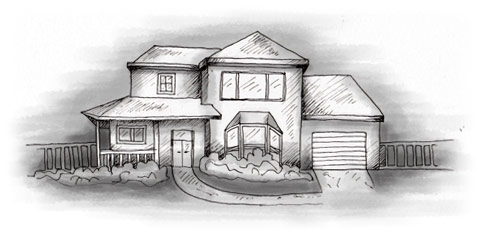If you are planning on renting in Belgium, look for signs reading à louer/te huur on the windows, visit a local real estate agent, or check the classified section of local newspapers and specialised websites.
Most of properties for rent are unfurnished. The kitchen may be described as equipée/uitgerust, which means that it includes a stove and a refrigerator (sometimes a dishwasher and/or microwave oven as well).
In order to rent a property you will be asked to present a proof of income. The landlord may also require a standing order for monthly rent payments.
Rental Contract
A standard lease in Belgium has a duration of nine years, and is broken down into three three-year periods (3-6-9 lease). There are also short term leases of less than three years, and long term leases of more than nine years.
The base rent of 3-6-9 leases can only be increased at the beginning of the three-year period. In order to increase the base rent, a written notice must be given six to nine months in advance.
To terminate a lease it is mandatory a three months notice in writing. Leases are automatically renewed at the end of the nine years, unless a six months' notice of intention not to renew (in writing), is given by the landlord or the tenant.
Leases must be registered with the Federal Public Service of Finances (Service Public Fédéral Finances/Federale Overheidsdienst Financien), within two months of being signed. The lease must be registered by the owner of the property, and is free of charge.
The contract registered should include:
- address of the property being rented
- parking spaces, garages or storage facilities included in the lease
- monthly rent amount
- date of payment
- details of any rent increases
- conditions of the deposit
- details of the guarantor (if the landlord requests for a guarantor)
Deposit
Security deposits (garantie locative/huurwaarborg) aren't mandatory unless stated in the lease contract. Deposits may not exceed the equivalent of two months' rent. They are placed in an interest-bearing bank under the tenant's name. This account is blocked, and the bank requires authorisation from the landlord and the tenant before the money can be released.
The deposit can also be a bank guarantee of not more than the equivalent of three month's rent. You can arrange it with your bank for an annual fee. The bank will provide a guarantee letter for the landlord, which must be returned to the bank at the end of the lease contract.
The deposit is usually refunded after the last common charges (maintenance and repair of communal areas and shared utilities) are determined and settled. As this is done at the end of the year, you may have to wait some time for the deposit to be refunded.
Inventory and Condition Report
When you move into a new property, you must complete and sign an Inventory and Condition Report (état des lieux/staat van het huis). This report is carried out by a surveyor (géomètre/landmeter), and it is paid by the landlord.
The report must include:
- state of the fixtures and fittings (if applicable)
- the cleanliness and condition of the decoration
- any items missing or in need of repair.
Insurance
By law, tenants are required to have a comprehensive household insurance certificate. You must present proof of insurance to your landlord at the signing of the lease, and each time the lease is renewed.
The comprehensive household insurance covers:
- a percentage of the capital and valuables
- legal costs incurred when personally liable or when claiming against a third party
- civil liability
- fire, explosions and related risks
- natural disasters
- theft and vandalism to set amounts
- broken windows

